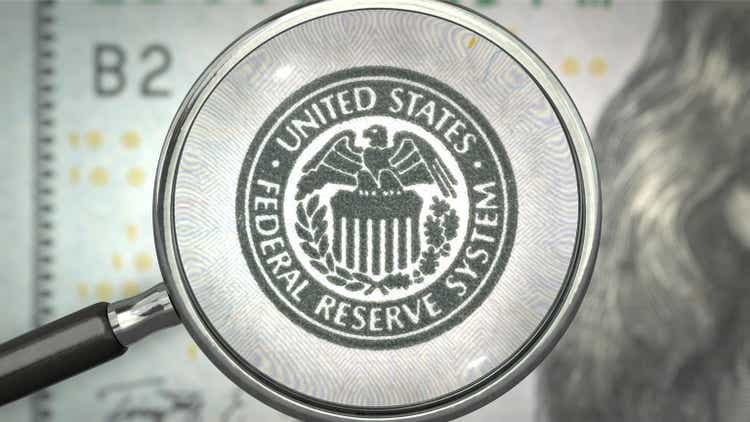
DesignRage/iStock via Getty Images
The Federal Reserve will release the results of its annual stress test after the close on Wednesday, which will determine the amount of capital that large banks will be required to set aside to help them weather a financial shock.
The tests will calculate each bank’s stress capital buffer (“SCB”) level. That, in turn, shows how much capital they’ll be allowed to return to shareholders in the form of dividends and stock buybacks.
For the largest banks — Category I through III — the 2024 test should produce similar SCBs to 2023’s test, Morgan Stanley analyst Betsy Graseck said in a recent note to clients.
The results should encourage global systemically important banks with significant excess capital to boost buybacks. “Among GSIBs (global systemically important banks), we look for a median 14.8% (wtd. avg. 182%) Y/Y increase in buybacks in 2025 after the Basel Endgame re-proposal,” Graseck said.
For Category I and II banks, one aspect of uncertainty is whether the Fed will change accumulated other comprehensive income (“AOCI”) calculations, she noted. “If the Fed’s AOCI methodology is different than last year, it could drive up SCBs for banks with large AFS securities portfolios,” she said. Citi (NYSE:C) should be least affected, as AOCI benefited its SCB by only 30 basis points vs. the median 40 bps across Cat I-II banks.
With the Fed’s tiered approach to bank regulations — in which regulations become tighter the bigger a bank is — not all banks take the test each year. The last time that banks with assets in the $100B-$250B range (Category IV) took the test was in 2022. Those banks include Ally Financial (NYSE:ALLY), American Express (NYSE:AXP), Discover Financial (NYSE:DFS), Fifth Third Bancorp (NASDAQ:FITB), Huntington Bancorporation (NASDAQ:HBAN), KeyCorp (NYSE:KEY), and Regions Financial (NYSE:RF). This year’s stress test is a tougher scenario than the 2022 one, presenting some upside risk for that group, Graseck said.
She sees less risk for M&T Bank (NYSE:MTB) and Citizens Financial (NYSE:CFG), Cat IV banks that took the test in 2023 due to acquisitions they had recently completed.
HSBC analyst Saul Martinez sees JPMorgan Chase (NYSE:JPM) and Bank of America (NYSE:BAC) as well positioned, even under a revised Basel III endgame rule. Wells Fargo (NYSE:WFC), he expects an SCB comparable to those of previous years will suggest “considerable excess capital,” even after factoring in potential Basel endgame requirements.
At Citigroup (C), though, an SCB level similar to last year’s, would lead to less capital flexibility when compared with other money center banks, he said.
Jefferies analyst Ken Usdin notes that “regional banks are most burdened by inclusion of AOCI into CET1, which is expected to remain in the final Basel III endgame rules.
“Buyback expectations have generally been increasing, given higher CET1 ratios, an expectation for softer B3 outcome, higher likelihood of a soft landing, and weaker loan demand,” Usdin wrote in a note from earlier in June.
Capital return estimates are higher for the GSIBs, “which all repurchased stock in 1Q and expect to continue throughout the year.”
For regional banks, Citizens Financial (CFG), PNC Financial (NYSE:PNC), and Regions Financial (RF) repurchased “modest amounts” of stock in Q1. Fifth Third (FITB), M&T Bank (MTB), and Truist Financial (NYSE:TFC) said they could resume buybacks later this year.
Across Jefferies’s bank coverage, the firm forecasts an average payout ratio of ~68% in 2025 (or ~7% of market cap), which is skewed towards M&T Bank (MTB), Bank of New York Mellon (NYSE:BK), State Street (NYSE:STT), and Wells Fargo (WFC), Usdin said.











